In Western Montana’s Glacier Country, spring isn’t just another season—it’s wildflower season. As the weather warms up, the landscape bursts into bloom. From the mountains to the meadows, the sight of these vibrant wildflowers adds a pop of color to an already incredible landscape, making it a magical time for outdoor activities like hiking, biking and road-tripping. Wildflower enthusiasts, visitors and locals alike can’t resist exploring the region during this colorful time of year.
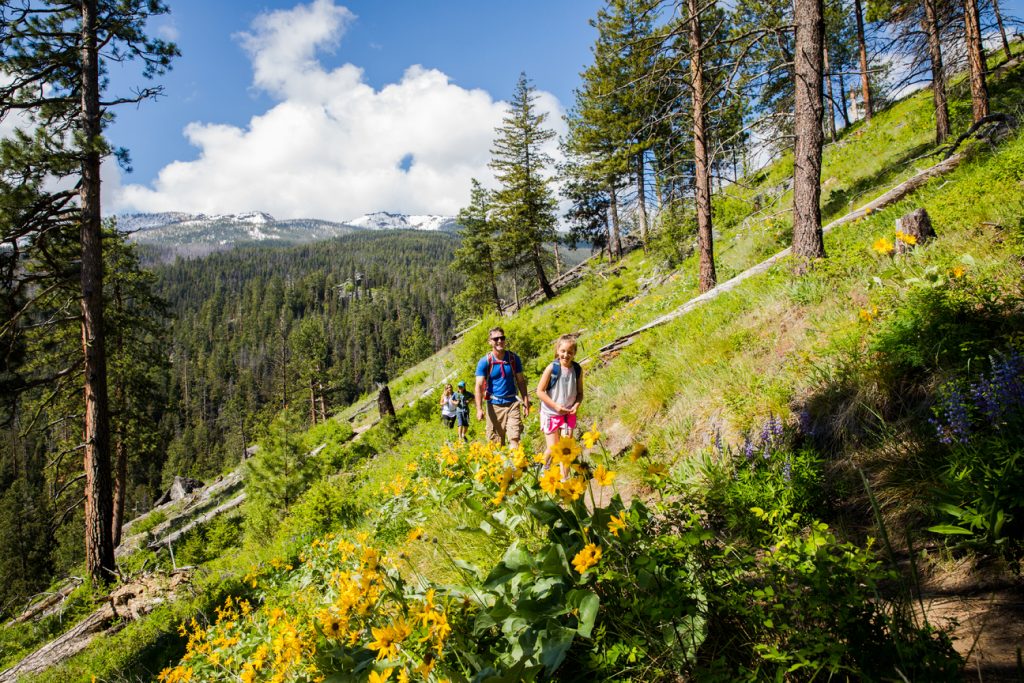
ARROWLEAF BALSAMROOT
Come May, these famous yellow flowers transform Western Montana’s hillsides. Arrowleaf balsamroot are part of the sunflower family and grow in clumps 2 to 3-feet tall. Some American Indian tribes once relied on these plants for food and medicinal purposes, but today they’re mostly eaten by wildlife. You’ll see them in low-elevation grasslands, on open slopes and ridges, and in open ponderosa pine woodlands. If you’re at the CSKT Bison Range in May, you can’t miss the overlapping hillsides awash in these delightful yellow clusters.
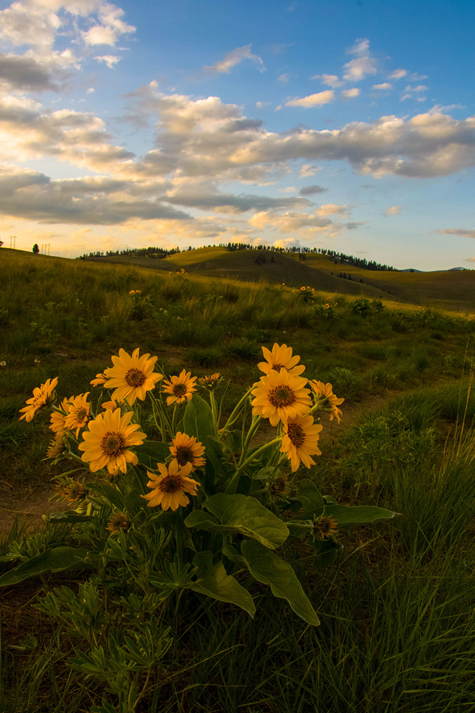
BEARGRASS
A Montana wildflower treasure, beargrass grows impressively high at 5 to 8 feet. Beargrass can be found throughout Western Montana, but it’s especially prolific in Glacier National Park. These dense, white clusters blanket the subalpine landscapes of the park and draw visitors hoping for a glimpse. You’ll find beargrass blooms in late May in the lower country and into August in the high country. Though beargrass is a perennial, mass blooms occur every five to 10 years, when the climate is just right.
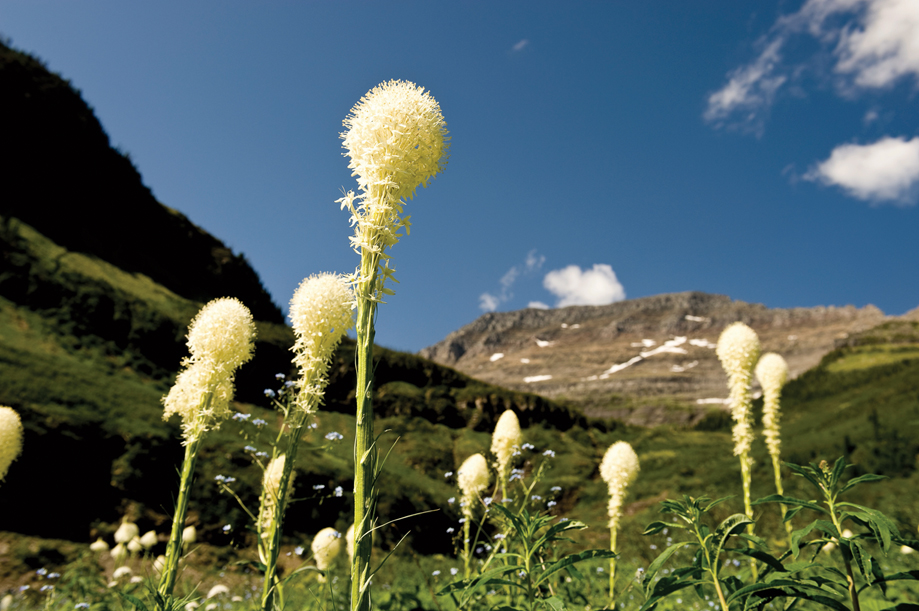
BITTERROOT
Montana’s state flower! The bitterroot is a lovely, low-growing pink bloom you’ll find in the foothills—like Missoula’s North Hills—during the spring and summer months. For some American Indians, the roots were considered a vital part of their diets. Lewis and Clark were so smitten by this flower they wrote about it in their journals. The Bitterroot Mountains, valley and river are all named for these tiny stemless, leafless, sometimes elusive treasures.

FIREWEED
A favorite among bees and delicious in jam and tea, fireweed is a striking pinkish-purple 4 to 9-foot cone-like shoot against the stunning Montana backdrop. They flourish in avalanche sites and burn areas, where they’re usually the first plant to emerge after a wildland fire—hence the name. From June through September, you’ll find fireweed in open meadows, along stream banks and in open forested areas.
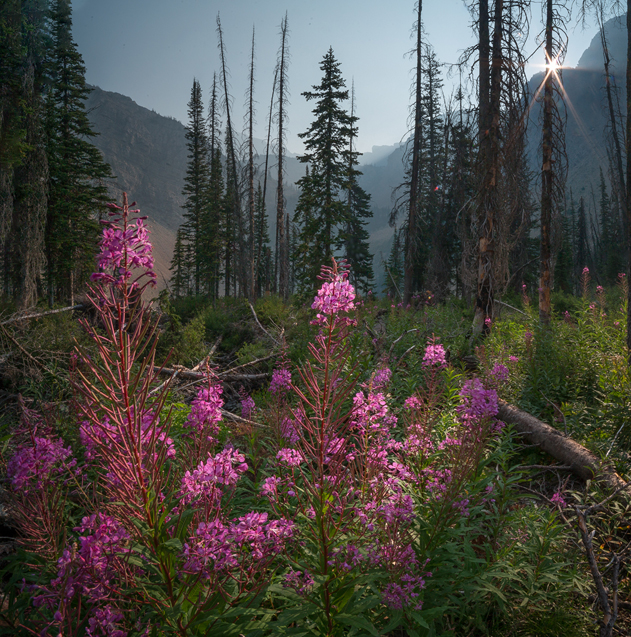
GLACIER LILY
In late spring and early summer, the mountain meadows of Western Montana come alive with the vibrant lemon-yellow blossoms of the glacier lily. This cheerful flower—a favorite food of grizzly bears and black bears—is often found at the edge of receding snow banks, signifying spring’s arrival. Meriwether Lewis even mentioned this species in his journal in the spring of 1806, suggesting its significance as a natural indicator of winter’s end. The Blackfeet Indians included glacier lily corms in their diet and dried the bulbs for trade between tribes.

INDIAN PAINTBRUSH
Indian Paintbrush, or prairie fire, has a vibrant paintbrush-like appearance and rich scarlet hues that pop against the landscape. Glacier National Park boasts three red and four yellow species of paintbrush, which grow between 4 and 16 inches high. You’ll find them in July and August in Montana’s alpine and subalpine meadows and mountain slopes, but they begin to bloom in April in lower elevations, like the banks of the West Fork of the Bitterroot River.
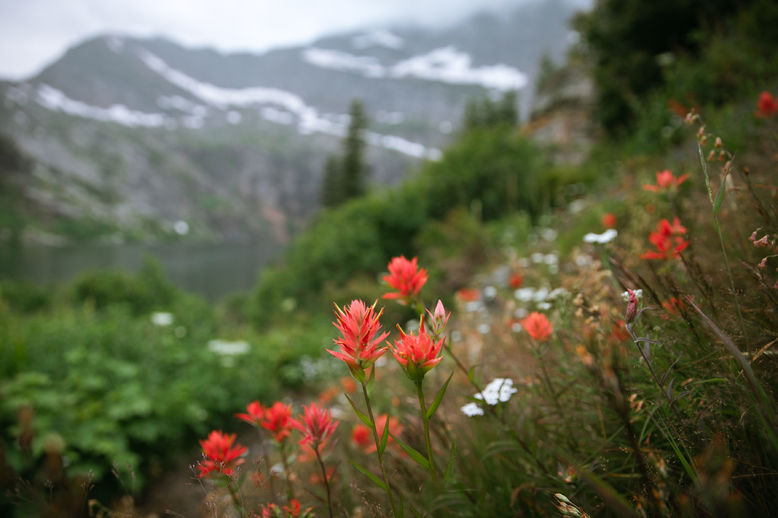
YELLOWBELL
When you spot a yellowbell, you know spring is on its way. In fact, yellowbells can often be found peeking out of light snow. These are one of the season’s first blooms. Don’t miss the distinct reddish-purple ring around the base of the yellow flower. These bashful bells keep their heads down in grasslands and dry sagebrush prairies as well as ponderosa pine forests, blooming through early May.

Please note: We ask that all our visitors and residents Recreate Responsibly by being mindful of the following: know before you go; plan ahead; play it safe; leave no trace; tread lightly; and help build an inclusive outdoors.
May 6, 2024
Related: American Indian, Bison Range, Glacier National Park, Missoula, Montana, Outdoor Fun, Spring Fun, Summer Fun, Vacation


Comments